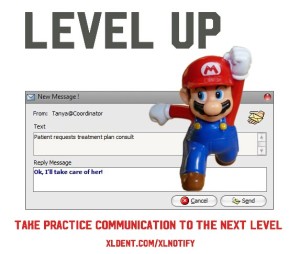With more people choosing their clinic through online search, having a well-designed website is crucial for dental practices. It serves as a virtual storefront where potential patients can learn about your practice and make a positive first impression.
To help you make the most out of your online presence, we’ve compiled a list of the top 10 best practices in web design for dental clinics.
By implementing these guidelines, not only will you create an engaging user experience, but you’ll also establish credibility and attract new patients.
1. Clear and Intuitive Navigation:
A well-organized website ensures that visitors can easily find the information they’re looking for. Implement an intuitive navigation menu that prominently displays essential pages such as services, about us, contact, and patient resources. Consider using a logical hierarchy, incorporating drop-down menus where relevant, and utilizing clear labels to guide users seamlessly through your site.
2. Responsive Design for Mobile Compatibility:
In an era where mobile usage is on the rise, it’s vital to optimize your website for various devices. Responsive design ensures that your site adapts and functions flawlessly on smartphones, tablets, and desktop computers. This approach not only enhances the user experience but also improves your search engine ranking, as Google prioritizes mobile-friendly websites in search results.
3. Engaging and High-Quality Visual Content:
Images and videos play a crucial role in capturing visitors’ attention and conveying your clinic’s unique atmosphere and services. Invest in professional photography to showcase your staff, facilities, and state-of-the-art equipment. Additionally, consider creating informative videos to demonstrate certain treatments or introduce your team. Including patient testimonials and before-and-after photos can provide social proof and build trust.
4. Optimize Search Engine Visibility:
Having a visually appealing website is only half the battle. To attract organic traffic and potential patients, you must optimize your site for search engines. This includes incorporating relevant keywords on your webpages, optimizing meta tags, creating unique and informative page titles, and ensuring your website loads quickly. Regularly update your content and add a blog section to share informative articles, further increasing your search engine visibility.
5. Seamless Appointment Booking and Contact Information:
One of the primary purposes of your website is to convert visitors into patients. Ensure that your contact information, including phone number, email address, and physical address, is prominently displayed on every page. Consider incorporating a user-friendly appointment booking form or a click-to-call feature, enabling visitors to schedule appointments effortlessly.
6. User-Centered Design:
When designing your website, keep the user’s experience in mind. Avoid cluttered layouts, use easy-to-read fonts, and ensure that all information is presented in a clear and concise format. Additionally, consider incorporating interactive elements such as quizzes or chatbots that engage visitors and help them find the information they need quickly.
7. Consistent Branding:
Your website should be an extension of your practice’s visual identity. Incorporate your practice’s branding elements such as colors, logo, and fonts throughout the site to create a consistent and recognizable image. This not only reinforces your brand but also enhances the site’s overall visual appeal.
8. ADA Compliance:
Incorporate ADA compliance guidelines when designing your site to ensure it is accessible to all visitors, regardless of their abilities. This includes providing alternative text descriptions for images and videos, ensuring that forms and buttons can be read by screen-readers, and using titles and headings appropriately.
9. Engaging Calls-to-Action:
Include clear and tempting calls-to-action throughout your site that encourage visitors to take action. These can include “Schedule a Consultation Today,” “Download Our Patient Forms,” or “View Our Services.” Make sure these buttons are prominently displayed and utilize color and design to draw visitors’ attention.
10. Regularly Monitor and Update Your Site:
Ensure that your website stays up-to-date by regularly monitoring and updating it. Check for broken links, update information and contact details, and add fresh content such as blog articles or patient testimonials. By constantly improving and refining your site, you’ll attract new visitors and retain existing ones.
Conclusion:
At XLDent, we believe that a successful website is one that delivers an excellent user experience, communicates your practice’s unique value proposition, and ultimately converts visitors into loyal patients.
By adhering to these best practices in web design for dental clinics, you can create a user-friendly and visually appealing online presence that reflects your professionalism and expertise.












 Subscribe
Subscribe Subscribe
Subscribe



